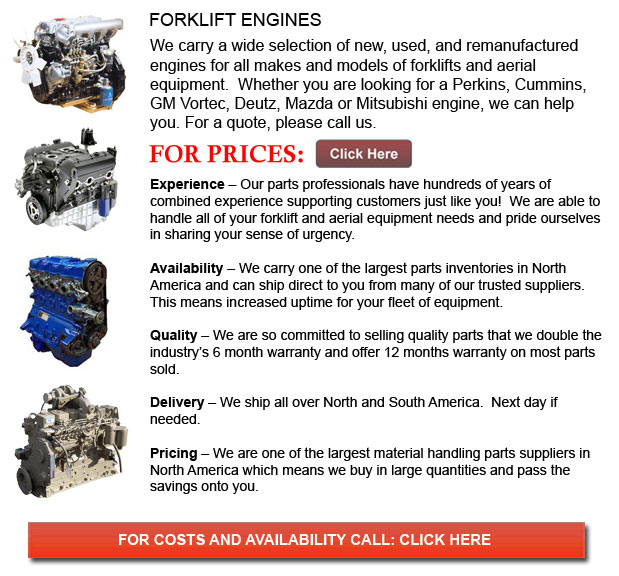
Engine for Forklifts - Also referred to as a motor, the engine is a tool that could transform energy into a useful mechanical motion. Whenever a motor changes heat energy into motion it is typically known as an engine. The engine can be available in several kinds like the internal and external combustion engine. An internal combustion engine typically burns a fuel utilizing air and the resulting hot gases are used for creating power. Steam engines are an illustration of external combustion engines. They utilize heat in order to produce motion making use of a separate working fluid.
The electric motor takes electrical energy and produces mechanical motion through different electromagnetic fields. This is a common type of motor. Several kinds of motors are driven through non-combustive chemical reactions, other kinds could use springs and function through elastic energy. Pneumatic motors are driven by compressed air. There are various designs based upon the application needed.
ICEs or Internal combustion engines
An ICE takes place when the combustion of fuel mixes with an oxidizer in a combustion chamber. In an internal combustion engine, the expansion of high pressure gases mixed along with high temperatures results in making use of direct force to some engine parts, for example, turbine blades, nozzles or pistons. This particular force produces functional mechanical energy by means of moving the component over a distance. Usually, an internal combustion engine has intermittent combustion as seen in the popular 2- and 4-stroke piston motors and the Wankel rotary motor. Most jet engines, gas turbines and rocket engines fall into a second class of internal combustion engines known as continuous combustion, that occurs on the same previous principal described.
Steam engines or Stirling external combustion engines very much differ from internal combustion engines. The external combustion engine, where energy is to be delivered to a working fluid such as hot water, liquid sodium, pressurized water or air that is heated in a boiler of some sort. The working fluid is not combined with, having or contaminated by combustion products.
Various designs of ICEs have been developed and are now available with numerous strengths and weaknesses. If powered by an energy dense gas, the internal combustion engine delivers an efficient power-to-weight ratio. Though ICEs have succeeded in various stationary applications, their real strength lies in mobile applications. Internal combustion engines control the power supply meant for vehicles such as boats, aircrafts and cars. Some hand-held power equipments make use of either ICE or battery power devices.
External combustion engines
In the external combustion engine is made up of a heat engine working using a working fluid like for example gas or steam that is heated by an external source. The combustion will happen via the engine wall or via a heat exchanger. The fluid expands and acts upon the engine mechanism that generates motion. Then, the fluid is cooled, and either compressed and reused or thrown, and cool fluid is pulled in.
Burning fuel utilizing the aid of an oxidizer to supply the heat is known as "combustion." External thermal engines can be of similar use and configuration but use a heat supply from sources such as geothermal, solar, nuclear or exothermic reactions not involving combustion.
The working fluid can be of whatever constitution. Gas is actually the most common kind of working fluid, yet single-phase liquid is sometimes used. In Organic Rankine Cycle or in the case of the steam engine, the working fluid varies phases between gas and liquid.
![]() Click to Download the pdf
Click to Download the pdf
Forklift Parts
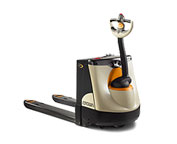
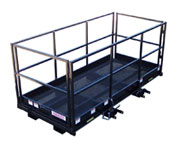
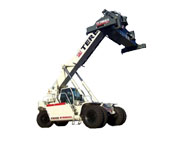
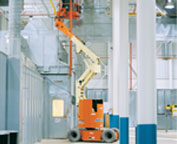
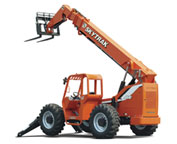
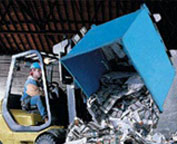
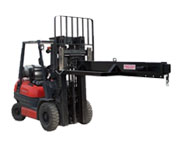
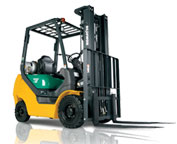
Lift Parts Express
TOLL FREE: 1-888-695-7994
LOCAL: 661-471-2086
2010 WEST AVENUE K 617
Lancaster, California
forkliftpartslancaster.com
Email Us
About Us


